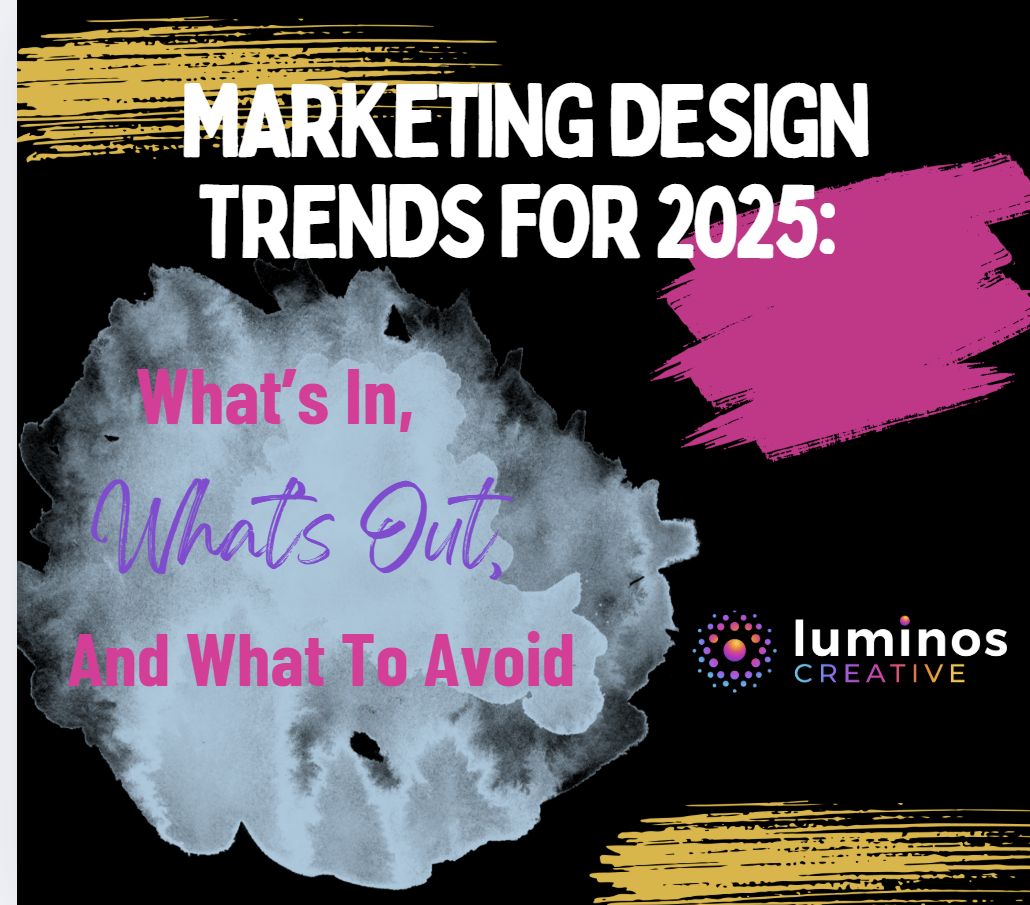Design is never static. Every year, new tools, technologies, and cultural shifts reshape how brands connect visually with their audiences. In 2025, design is more than just “looking good.” It’s about authenticity, personalization, and creating experiences that resonate across platforms and audiences.
Whether you’re a small business or a global brand, staying aware of design trends can help your marketing stand out while staying relevant. Let’s explore the top design trends shaping 2025, and the pitfalls to avoid.
Trend 1: AI-Enhanced Creativity
Artificial intelligence is no longer just a buzzword. In 2025, AI-powered design tools are helping marketers create faster and smarter. Think AI-generated layouts, dynamic visuals, and automated resizing for different platforms.
Pitfall: Over-reliance. Designs that look mass-produced or “too AI” risk feeling generic. Human creativity is still the differentiator, and needs to be the basis of design. Keep working with artists and designers!
Trend 2: Hyper-Personalized Visuals
Personalization goes beyond email greetings. Brands are now tailoring imagery, design, and color schemes to reflect customer preferences, locations, and contexts. A fitness brand might show different ad visuals to a runner in Austin versus a gym-goer in Chicago.
Pitfall: Data overload. Overly invasive personalization can feel creepy rather than helpful.
Trend 3: Minimalist but Bold
The less-is-more approach continues, but it’s paired with bold typography and accent colors that grab attention. The result: clean, impactful, and easy to digest on mobile screens.
Pitfall: Too much minimalism can look bland if not paired with strong focal points. Don’t be afraid to go with some bold choices if it fits with your brand.
Trend 4: Sustainable & Ethical Design
More brands are reflecting sustainability in their design choices, from earthy tones and recycled textures to infographics highlighting supply chain transparency. Ethical visuals signal that a company is values-driven.
Pitfall: Greenwashing. If sustainability isn’t real, the design won’t save you. Consumers see through inauthentic claims, and it will drive them away if it’s disingenuous.
Trend 5: Immersive Experiences
AR/VR, interactive ads, and micro-animations are transforming digital spaces into immersive experiences. Brands that leverage motion and interactivity stand out in crowded feeds.
Pitfall: Overcomplication. Immersive doesn’t mean confusing. Always design with clarity in mind. If it doesn’t fit, don’t force it. Ask yourself, is this actually going to enhance the experience, or is it just complicating things for the sake of it?
Trend 6: Nostalgia + Retro Futures
Expect to see a rise in retro-inspired designs: Y2K gradients, pixel aesthetics, and 90s patterns, but with a modern twist. Nostalgia creates emotional resonance, especially with younger audiences rediscovering past eras.
Pitfall: Overdoing it. Nostalgia works best when balanced with fresh, modern execution. Reshaping your entire brand around nostalgia when it doesn’t fit is only a good decision if you’re trying to come across as inauthentic!
Trend 7: Inclusive & Diverse Representation
Representation in visuals is no longer optional. Brands are highlighting diversity in race, age, gender, ability, and lifestyle; authentically and consistently.
Pitfall: Tokenism. Forced or shallow diversity efforts can backfire. Diversity shouldn’t be performative; it should be something you’re doing because it’s the right thing to do by your audience(and also your brand).
Trend 8: Typography as a Hero Element
Typography is stepping into the spotlight in 2025. Expect bold, custom fonts and kinetic typography as the centerpiece of campaigns, sometimes replacing imagery altogether.
Pitfall: Style over readability. If people can’t easily read it, you’ve lost them.
Trend 9: Dark Mode-First Design
Dark mode isn’t just a user preference anymore, it’s becoming the default in many cases. Marketing creatives, websites, and emails are being built with dark mode in mind to ensure legibility and aesthetic consistency.
Pitfall: Forgetting contrast. Poor design choices can make dark mode inaccessible for some users.
What to Avoid in 2025
While trends can keep your design fresh, there are traps to steer clear of:
- Overusing AI and stock visuals that look the same as everyone else’s. Despite the huge utility that comes with AI, consumers are increasingly becoming sensitive to content that feels AI-generated, and design is no exception.
- Ignoring accessibility by choosing poor contrast, tiny fonts, or non-inclusive designs. Accessibility is not negotiable; it’s a must. Remember, your users may be vision-impaired, color blind, or have other conditions that are sensitive to certain kinds of design. Not only will keeping these people in mind make it more likely to earn their business, but it also makes the world a more inclusive place, which is also a plus!
- Cluttered layouts; more elements don’t mean better content, and it definitely doesn’t mean better results. Instead of trying to stuff as much information in as you can, focus on the key elements that you’re trying to convey. Instead of adding more, making these key elements interactive will do a lot more for increasing conversions.
Key Takeaways
- 2025 design is about authenticity + innovation.
- AI is a tool, not a replacement for creativity.
- Trends like personalization, sustainability, and inclusivity reflect deeper consumer values.
- The best design is both beautiful and functional.
- More than anything, staying true to your brand is more important than any trend. Don’t trend hop just for the sake of it!
Conclusion
Marketing design trends in 2025 are about balance. The most successful brands will combine technology, creativity, and authenticity to build meaningful connections. Whether you’re experimenting with AI, testing immersive experiences, or leaning into nostalgia, remember: trends come and go, but brand trust and clarity always last.
Looking to update your branding with some fresh new designs? Contact our expert team of marketers here to get started!

